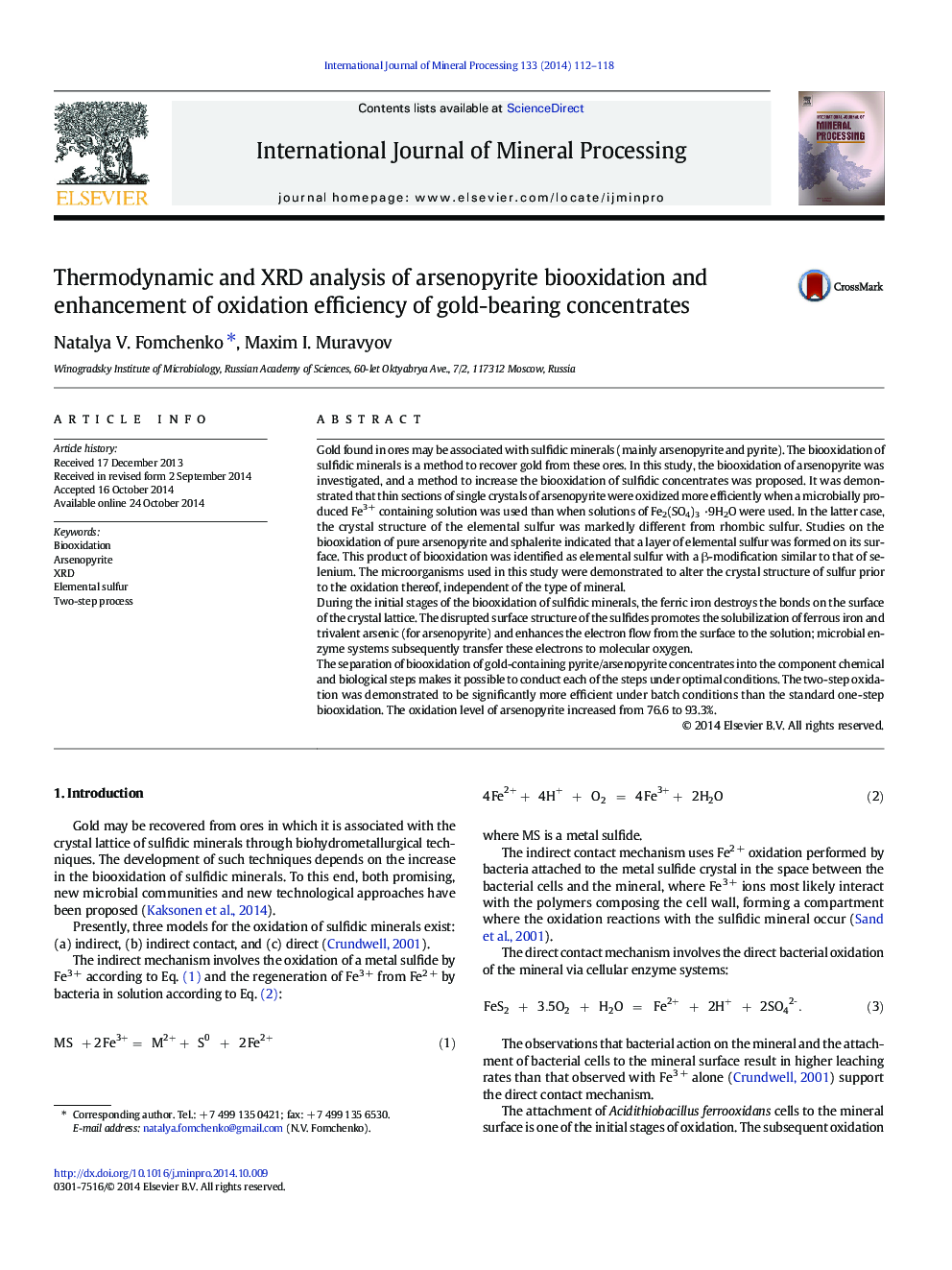| Article ID | Journal | Published Year | Pages | File Type |
|---|---|---|---|---|
| 213882 | International Journal of Mineral Processing | 2014 | 7 Pages |
•The biooxidation of arsenopyrite has been investigated using thermodynamic and XRD.•Microorganisms alter the crystal structure of elemental sulfur.•A two-step process allows to accelerate the oxidation of the sulfide sources.
Gold found in ores may be associated with sulfidic minerals (mainly arsenopyrite and pyrite). The biooxidation of sulfidic minerals is a method to recover gold from these ores. In this study, the biooxidation of arsenopyrite was investigated, and a method to increase the biooxidation of sulfidic concentrates was proposed. It was demonstrated that thin sections of single crystals of arsenopyrite were oxidized more efficiently when a microbially produced Fe3 + containing solution was used than when solutions of Fe2(SO4)3 ·9H2O were used. In the latter case, the crystal structure of the elemental sulfur was markedly different from rhombic sulfur. Studies on the biooxidation of pure arsenopyrite and sphalerite indicated that a layer of elemental sulfur was formed on its surface. This product of biooxidation was identified as elemental sulfur with a β-modification similar to that of selenium. The microorganisms used in this study were demonstrated to alter the crystal structure of sulfur prior to the oxidation thereof, independent of the type of mineral.During the initial stages of the biooxidation of sulfidic minerals, the ferric iron destroys the bonds on the surface of the crystal lattice. The disrupted surface structure of the sulfides promotes the solubilization of ferrous iron and trivalent arsenic (for arsenopyrite) and enhances the electron flow from the surface to the solution; microbial enzyme systems subsequently transfer these electrons to molecular oxygen.The separation of biooxidation of gold-containing pyrite/arsenopyrite concentrates into the component chemical and biological steps makes it possible to conduct each of the steps under optimal conditions. The two-step oxidation was demonstrated to be significantly more efficient under batch conditions than the standard one-step biooxidation. The oxidation level of arsenopyrite increased from 76.6 to 93.3%.
